As an experienced plumber at Ferguson’s Plumbing, I’ve had the pleasure of seeing the evolution of Aussie design trends firsthand.
From quintessential kitchen basics to modern day stylistic revivals, there’s been a significant transformation in Australian homes.
Now, let’s delve into an overview of some key Aussie design trends over the decades:
- 1940s-1960s: The inception of Australian kitchen basics and modern designs favoured openness and functionality.
- 1970s-1980s: This was a time marked by the exploration of colour, pattern, functionality and style in home design.
- 1990s-2000s: The era of minimalist kitchen trends and embrace of technological advancements redefined our living spaces.
- 2010s-present: Focus has shifted towards sustainable materials, while also appreciating a blend of retro revival and maximalist decor.
- The Future: Anticipation around future trends points towards smart home technology and further innovation in design.
This list is just a hint of the ongoing evolution in the Aussie design trends.
A Glimpse Into Design Progression
Australian homes have always been inspired by globally emerging design influences.
Even now, as sustainability becomes paramount, Australian homeowners are enthusiastically making way for eco-friendly kitchen trends.
The incorporation of advanced technology promises an exciting future for Aussie home designs.
It’s exhilarating to see contemporary Australian designs achieve that perfect balance between aesthetics and practicality.
Contents
- 1940s: Australian Kitchen Basics
- 1950s: Emergence of Modern Kitchen Designs
- 1960s: Transition to Open-Plan Kitchen Spaces
- 1970s: Era of Color and Pattern
- 1980s: Fusion of Functionality and Style
- 1990s: Rise of Minimalist Kitchen Trends
- 2000s: Embrace of Technological Advancements
- 2010s: Focus on Sustainable and Eco-Friendly Materials
- 2020s: Blend of Retro Revival and Maximalist Decor
- Future Trends: Incorporation of Smart Home Technology
- Contemporary Australian Kitchen Design Influences
- Making Way for Future Kitchen Trends
- Cookspace Chronicles
1940s: Australian Kitchen Basics
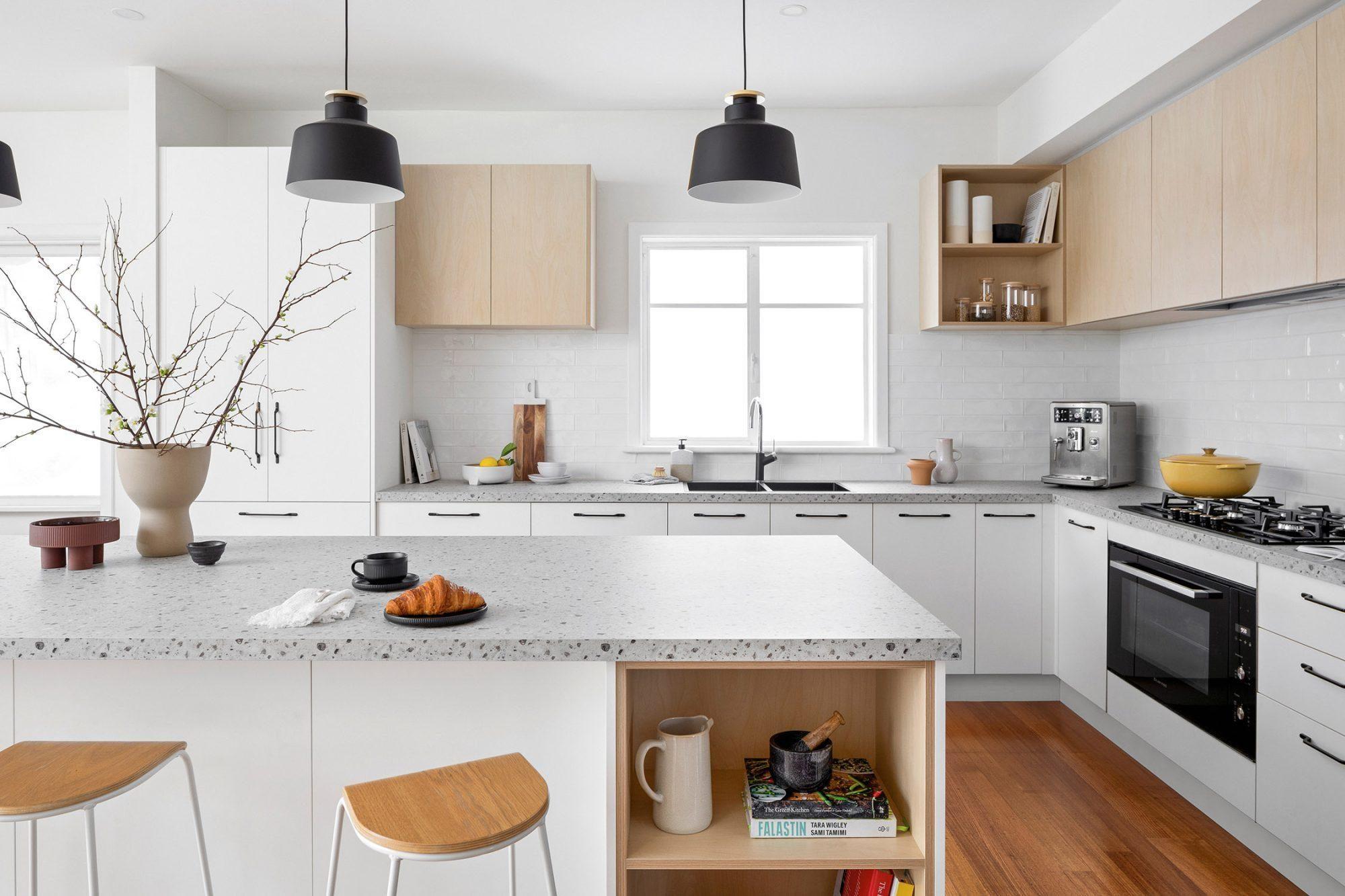
The 1940s were a pivotal decade for Australian home design, especially kitchens. The National Trust Australia holds profound significance from this era.
Members of the National Trust Australia, thriving on the rich history of Australian homes, often find inspiration in historically significant properties and gardens.
Moving beyond architectural aesthetics, the National Trust also offers intriguing events such as talks and markets. These pop-up events serve as fantastic educational resources for homeowners.
“Empower your kitchen revamp with rich Aussie history – embrace our past to inspire your present.”
Your home can echo the style of the 40s. The Trust’s collection of letters, photographs, paintings, and sculptures provide a nostalgic visual guide.
You’ll find gems in their diverse range of accommodations that transport you back to the 1940s era. These are brilliant places to gather practical design cues.
As part of their call to action, they invite everyone to contribute their skills as volunteers or donate to preserve our heritage. This allows everyone to play a part in maintaining and reviving 1940s-style homes.
1950s: Emergence of Modern Kitchen Designs
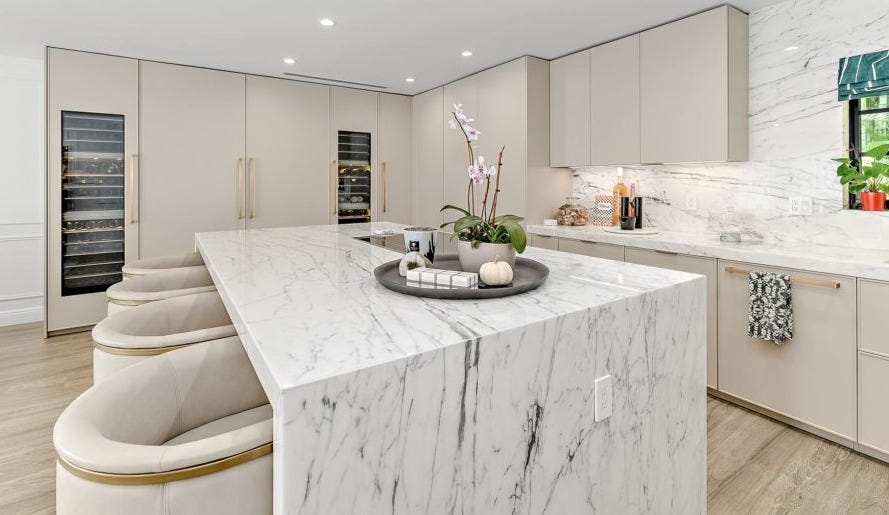
During the 1950s, modern kitchen designs began to take centre stage in Aussie homes. This period was marked by an increasing interest in “anthropometrics”, also commonly referred to as ergonomics or human factor analysis.
Esteemed industrial designer Henry Dreyfuss penned Designing for People in 1955 and The Measure of Man in 1960, two influential texts that popularised concepts of user-centred design.
These works highlighted the importance of designing products that catered to the average user’s needs. A key example from this era was Cornell University’s revolutionary “Cornell Kitchen”.
| Concept | Definition | Impact |
|---|---|---|
| Ergonomics | The study of designing items to fit the human body and its movements. | Increased comfort and efficiency in everyday tasks. |
| Cornell Kitchen | A kitchen design with adjustable countertops to fit individual users. | Personalised user experience and enhanced functionality. |
| Annual Styling | A marketing technique borrowed from the automotive industry, where appliance designs are updated yearly. | Fresh and modern aesthetics to attract customers. |
| Monsanto House of the Future | A futuristic home sponsored by Monsanto at Disneyland featuring cutting-edge appliances. | Dream home aspirations ignited amongst consumers. |
| Microwave Oven | A groundbreaking kitchen device promising quick heating and cooking functions. | Ease of use increased, cooking times reduced significantly. |
| 1950s Kitchen Design Trends and Their Impact | ||
Beyond the emergence of ergonomics and user-centred design, the 1950s also saw the advent of newer, more durable materials like plastic being adopted for creating stylish kitchens.
One prime example was the Monsanto House of the Future at Disneyland. This futuristic home was “set” in 1986 and introduced novel ideas such as intercom systems and microwave ovens to a fascinated public.
This period also marked a shift in appliance aesthetics. Inspired by sleek trains and cars from the 1930s, designers began incorporating annual styling into their work, effectively mimicking the automotive industry’s model of planned obsolescence.
1960s: Transition to Open-Plan Kitchen Spaces
In the 1960s, Australian homes witnessed a significant shift in interior design. Kitchens started becoming the heart of the home, moving away from being just utilitarian spaces.
Open-plan kitchens were introduced, breaking down walls and blending seamlessly with living areas. This promoted communication and unity within households.
- Flexible layout: The open-plan design provided flexibility in terms of space usage.
- Social interaction: It encouraged more interaction among family members.
- Natural light: The lack of walls enhanced natural light and ventilation in the kitchen.
- Easier supervision: It made it easier for parents to oversee children while preparing meals.
Do you want to recreate this vintage charm in your modern house? Here’s how:
- Bright colours: Use vibrant shades for your kitchen cabinets and countertops.
- Sleek appliances: Opt for modern, sleek appliances that complement the space aesthetically.
- Careful lighting: Install lights strategically to keep the kitchen well-lit and welcoming.
- Integrated spaces: Ensure seamless integration between the kitchen and adjacent living area.
Taking inspiration from the 1960s can create a warm and welcoming atmosphere in your home. However, always remember, functionality is key when designing your kitchen space.
1970s: Era of Color and Pattern
The 1970s brought bold, vibrant colours and patterns into boys’ trousers. Stripes and plaids were especially favoured. Matching jackets along with hues like yellow, orange, and green ruled the scene.
Loud colours and patterns defined the 1970s, with avocado green, yellow, and orange taking centre stage. Floral patterns were a hot commodity, while geometric shapes added to the visual charm.
Noisy patterns stole the show, leaving a deep impression. The playful vibe of this era was amplified by disco fonts and bubble fonts that exuded liveliness and exuberance.
Hippie Influence in Fashion
Women’s fashion retained the 1960s hippie style. Bell bottom pants, frayed jeans, and midi skirts were in vogue. Accessories like chokers, headbands, scarves made of natural materials complemented their attire.
Men donned satin shirts with hip-hugging bell bottoms. Double-breasted suits in corduroy, paisley, wool were favoured for both special occasions and everyday wear.
Fashion Shifts Mid-decade
The mid-70s saw a shift to more casual styles. Fitted t-shirts with elaborate designs became popular. This was also when women started entering the workforce in larger numbers, prompting more tailored business attire.
Disco Dominates Late ’70s
In the late 70s, disco fashion reigned supreme. Women sported jersey wrap dresses and sequined shirts while men leaned towards three-piece suits with wide lapels in shades like beige or powder blue.
In essence, the decade was marked by a bold playfulness towards colour and pattern, reflecting an experimental and carefree attitude of the times.
1980s: Fusion of Functionality and Style
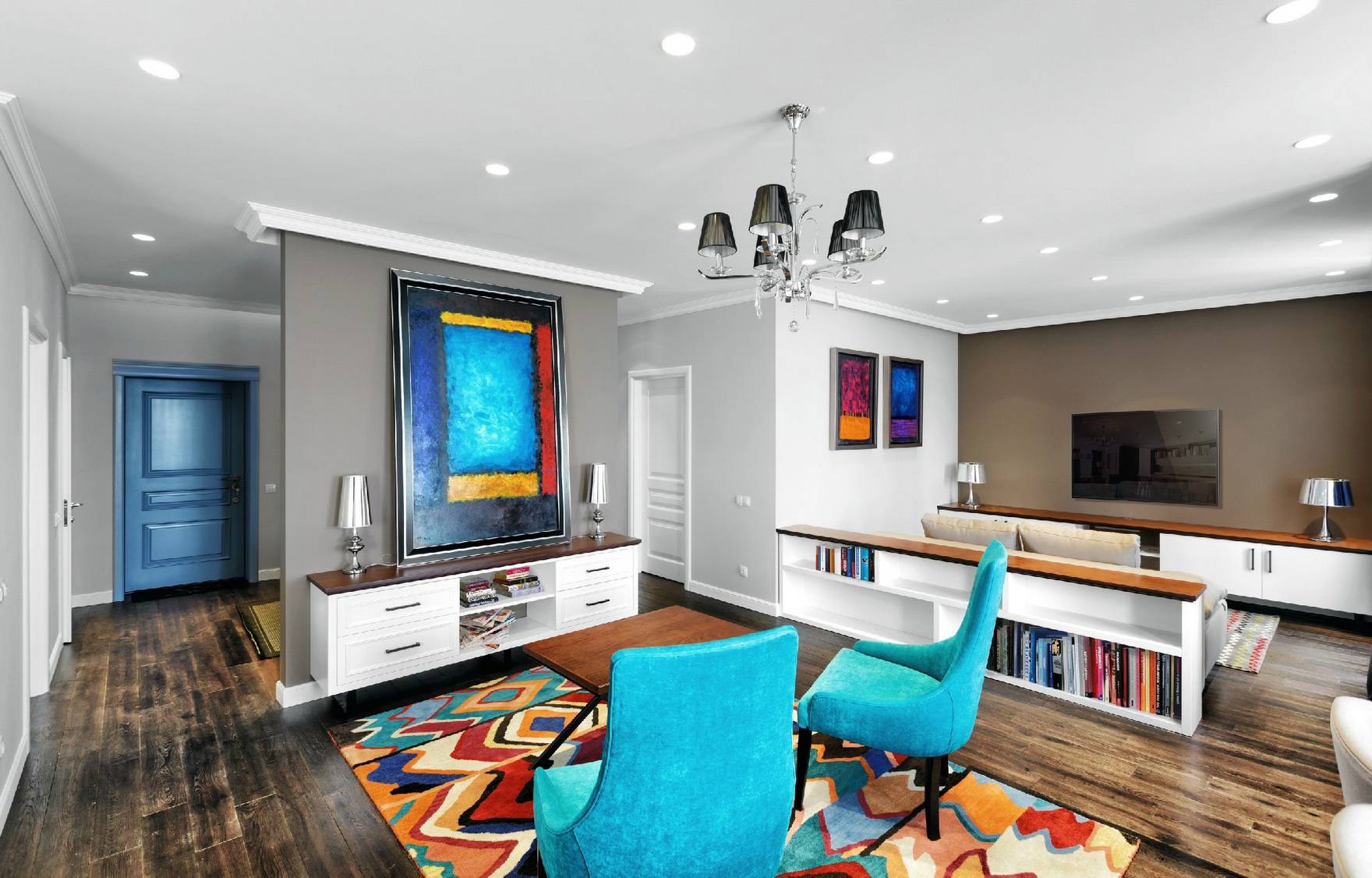
The 1980s introduced a fresh wave of interior design. Homes of this era witnessed a unique blend of practicality and flair.
During this period, popularity soared for designs that combined everyday function with an aesthetic appeal.
Practical meets Posh
This trend was all about creating spaces that were not only functional but also stylish.
The homely environment got revamped to embrace designs which were easy on the eyes yet practical.
Colours and Patterns
Bold, vibrant colours and intricate patterns were the order of the day, adding vivacity to every living space.
Australians broke free from the pales and pastels, adding a splash of daring to their homes.
Furniture Trends
In terms of furniture, this era embraced clean, minimalist lines with an emphasis on comfort and functionality.
Gone were the days of ornate, fussy furnishings as Australians welcomed simplicity with open arms.
Kitchen & Bathroom Designs
Kitchens and bathrooms transformed into modern, efficient spaces adorned with glossy finishes and compact designs.
A firm favourite from this era was the combination laundry-bathroom for its smart use of space.
1990s: Rise of Minimalist Kitchen Trends
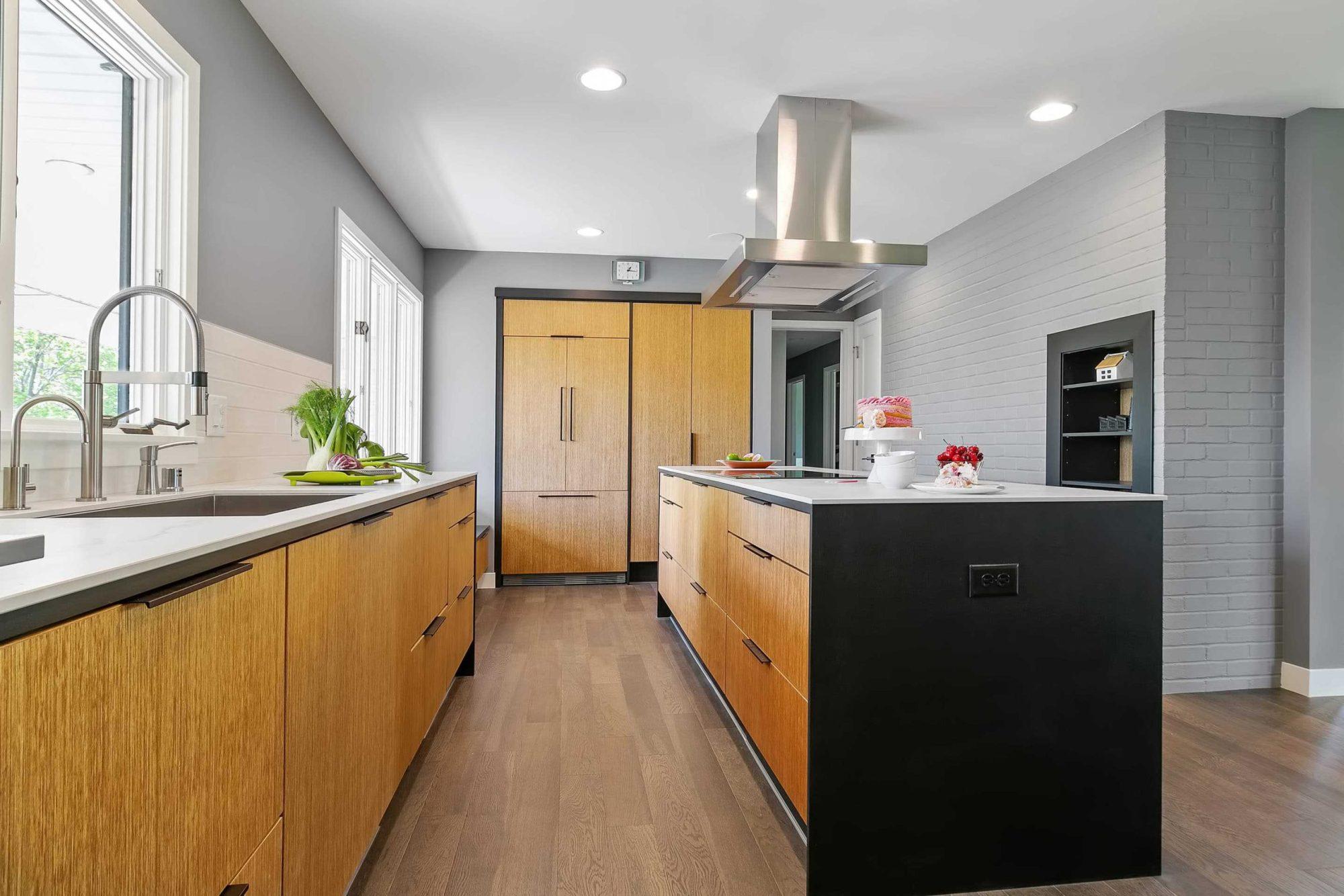
The ’90s era is known for its minimalist kitchen trends. Homeowners like Donna Talley (@homestylingworks) and Randy Schmit were on the lookout for a dated kitchen, to transform into their dream kitchen.
They found what they were looking for in a 1997-built home. It had a matching kitchen with good bones, but with room for improvement. The layout was practical, and there was no need to relocate the plumbing or the gas range,” according to Donna.
- Natural lighting: Ample natural light through a large window over the sink and sliding doors leading to the backyard.
- Pantry: A decent-sized pantry closet that added value to the space.
- Challenges: There were fixes required such as updating finishes, flooring, fixtures, and appliances.
The island needed resizing to accommodate an avid cook, the existing cabinets didn’t have good quality, and the built-in desk took up valuable space. The soffits above the cabinets wasted even more space.
“In order to keep our budget, we needed this kitchen redesign to be a mix of splurges and saves,” Donna says. The first splurge was a black-and-brass stove resembling ones Donna saw in France.
Finding an American company that produced in same Italian factories for much cheaper made it seem like destiny. The other significant purchase was on the countertops. Donna and Randy’s journey gives an insight into reinventing a ’90s minimalist kitchen into a dream kitchen.
2000s: Embrace of Technological Advancements
The advent of Google AdWords in 2000 shook up the advertising industry. This innovative platform charged based on performance, not time slots.
In 2001, Apple introduced the iPod, changing our relationship with music. Suddenly, our entire music library could fit in our pocket.
No mention of the 2000s is complete without talking about Facebook. It redefined how we communicate and share information online.
- Airbnb: Launched in 2008, this revolutionised the hospitality industry. Homeowners could now easily rent out their properties.
- Fitbit Tracker: Released in 2009 and kickstarted the quantified self movement. It encouraged users to track fitness and health metrics.
The innovations of the 2000s paved the way for a mobile-first environment. They also had significant impacts across various industries.
Significant changes were observed in advertising, communication, hospitality, and health and fitness sectors. These dramatic shifts are still being felt today.
2010s: Focus on Sustainable and Eco-Friendly Materials
A big shift took place in the 2010s, as focus switched to sustainable and eco-friendly materials.
In Australia, SBS played a crucial role in adopting sustainable practices, measuring its carbon footprint from 2020 onwards.
It implemented its third Greenhouse Gas Assessment in the year 2023.
SBS aims to get net zero targets validated by the Science Based Targets Initiative (SBTi), an international standard.
The SBTi will audit SBS’s decarbonisation strategy to assure alignment with modern scientific research.
In 2022-23, SBS made a significant move by switching to renewable energy sources.
Purchase of Large Generation Certificates registered with the Clean Energy Regulator enabled this change.
Besides, their fleet transitioned to hybrid and electric models. This marked Net Zero for direct operations.
SBS also became a founding member of Sustainable Screens Australia, unifying broadcasters and production companies to implement sustainability into TV and film production.
‘The Cook Up with Adam Liaw’ was an exemplary environmentally friendly program by SBS which used low-emission production methods.
This initiative showed the commitment towards sustainability both off-screen and on-screen.
Moreover, police series ‘Insight’ and ‘Going Places with Ernie Dingo’ are due for emission measurements in 2024.
Additionally, SBS aided in establishing the audio-centric Green Ears group, sharing sustainable broadcasting experiences.
SBS also partnered with Scope 3 to offer transparency over emissions from advertising campaigns.
The network sets an ambitious target of achieving Net Zero across all emissions by 2045.
2020s: Blend of Retro Revival and Maximalist Decor
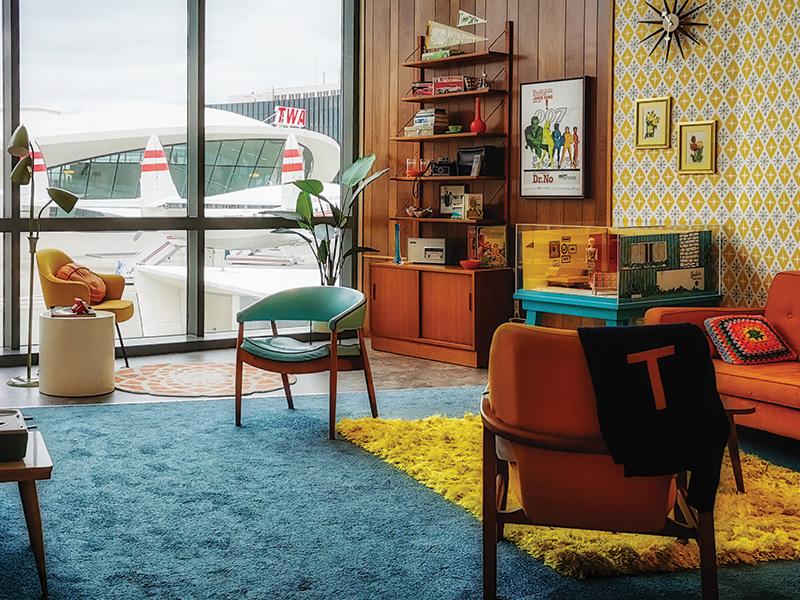
Maximalism takes its roots from many sources, with a strong influence from our families’ collections of curios and keepsakes.
Many of us might have fond memories of our grandparents’ homes, where every corner held a myriad of knick-knacks, ranging from brass animals to dated encyclopedias.
This penchant for accumulating an abundance of items isn’t necessarily about maintaining an immaculate sense of chic. It’s more about creating warm, comforting environments through a plethora of colours, patterns, and textures.
| Maximalist Influences | Examples |
|---|---|
| Familial Keepsakes | Pressure cookers, Brass animals, Hummel figures |
| Vintage Books | Set of Mark Twain first editions |
| Unique Artifacts | Mahogany ship’s clock, California Impressionist landscape |
| Retro Furniture | Cane-patterned needlepoint cushions, Gelato maker |
In the maximalist style, each item has its unique place and story to share in your home.
Prominent figures like Diana Vreeland have championed this aesthetic, likening a dash of vulgarity to the cheeky flavour kick added by paprika on a deviled egg.
Modern designers like Miles Redd and Rita Konig take inspiration from this maximalist philosophy, creating spaces filled with colour, comfort, and character.
Mixing old with new, retro with contemporary, maximalist decor blends an array of inspirations to create inviting, expressive spaces.
Future Trends: Incorporation of Smart Home Technology

What is the major change anticipated in the smart home industry?
The smart home industry looks toward significant maturation, especially through a multi-brand project called Matter.
The introduction of Matter promises to address prevalent problems such as privacy concerns, compatibility issues and pricing for smart home services.
What is Matter and its significance?
Matter aims to create a universal protocol to facilitate seamless connection and integration between different smart home devices.
Supported by Wi-Fi and major control platforms, this initiative enjoys the backing of tech giants such as Amazon, Apple, Samsung and Google.
What are some upcoming products integrating Matter?
Anticipated devices for 2022 includes Amazon’s Astro home robot and Ring Always Home Cam drone. The Astro robot offers various functionalities like video calling, while also serving as a home security device when integrated with Ring’s ecosystem.
How are security brands adapting to this trend?
Security brands like Ring, SimpliSafe, and Wyze are gravitating towards DIY structures for personalization and ease of installation.
The integration trend sees traditional devices being connected to smart speakers, routers, and thermostats, making systems smarter.
What future developments can homeowners expect?
Future advancements involve ADT and Comcast Xfinity offering smart device installation within their larger home security ecosystems. TP-Link announced several new security cameras and sensors,
Fostering the expansion of home security as a product category. Total integration will be facilitated by the rollout of Matter, enhancing user experience through easy setup and device compatibility.
Contemporary Australian Kitchen Design Influences

Aussie homeowners are now embracing organic shapes and handmade kitchen tiles, veering away from the traditional square and subway tiles.
This switch to zellige and irregularly shaped tiles adds a distinctive personality and depth to your kitchen.
Smart tech and sustainable design are also becoming big in Aussie kitchen renovations, highlighting efficiency, convenience, and eco-friendliness.
- Functional over flash: Aussies are designing kitchens with a strong focus on practicality without sacrificing aesthetic appeal.
- Colour revolution: White kitchens are giving way to cabinets in earthy tones like soft greens, warm terracottas, and tranquil blues for a serene environment.
- Luxury backsplashes: Marble-veined backsplashes remain a favourite choice. Options range from classic white to striking black marble, adding an opulent touch.
- Innovative tiling: Unique tile shapes and textures contribute warmth and individual charm to modern kitchen designs.
These changes reflect the growing preference for both sustainable materials and intelligent appliances in Australian kitchens. They allow homeowners to personalise their kitchen space while contributing positively to the environment.
Finding the right balance between practicality, aesthetics, and sustainability is key in choosing the perfect kitchen design that suits not just your style, but also upholds these contemporary Australian principles.
Making Way for Future Kitchen Trends

Australian homes are seeing a new wave of kitchen design trends, thanks to bespoke builders like The Kitchen Design Centre.
Handcrafted Kitchens Tailored for You
The Melbourne-based company prides itself on delivering uniquely crafted kitchens that perfectly suit your lifestyle.
Experienced Builders Using Modern Machinery
Skilled cabinet makers operate state-of-the-art machinery to construct your dream kitchens.
Showrooms Offering Inspiration
The Kitchen Design Centre invites all to visit their showrooms and begin the journey toward creating their dream kitchen.
Appreciation Through Referrals
A rewarding referral program is in place as a token of gratitude for customers and those who promote the brand.
Your first-time visitor friends can mention your name, leading to a gift card if they commission a kitchen build.
Seeking Balance in Sophistication and Relaxation
Innovative collaborations between architecture firms and The Kitchen Design Centre constantly redefine kitchen standards.
Luxurious kitchen designs embody elegance, functionality, and sophistication, striking the perfect balance between high-end living and relaxed vibes.
Cookspace Chronicles
Australian kitchen design trends have seen significant changes over the decades. From the past’s simplistic kitchens to the current era’s open concept designs and high-tech appliances, each trend reflects the changing lifestyle, preferences, and technology advancements of Australians. Understanding these trends can give homeowners insights into embracing new innovations or preserving timeless elements in their own kitchens.
- Kitchen Oasis. Fusion of Relaxation and Functionality (AU) - November 2, 2024
- Pure Water Pleasure. Why You Should Consider Installing a Kitchen Water Filter - October 22, 2024
- Green Plumbing Practices. Eco-Friendly Ideas for Your Melbourne Kitchen - October 2, 2024
Related posts:
 Top Kitchen Trends for Stylish Aussie Homes in 2024, 2025 and Beyond
Top Kitchen Trends for Stylish Aussie Homes in 2024, 2025 and Beyond
 Family Central: Aussie Kitchen Design for Busy Lives
Family Central: Aussie Kitchen Design for Busy Lives
 Trendy Taps. Stylish Kitchen Tap Design Trends to Enhance Your Kitchen
Trendy Taps. Stylish Kitchen Tap Design Trends to Enhance Your Kitchen
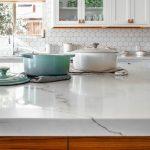 Kitchen Colour Trends for 2024 and 2025: Making a Statement in Your Australian Kitchen
Kitchen Colour Trends for 2024 and 2025: Making a Statement in Your Australian Kitchen
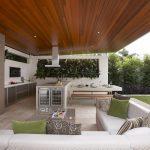 BBQ Paradise: Kitchen Design for Aussie Grill Masters
BBQ Paradise: Kitchen Design for Aussie Grill Masters



